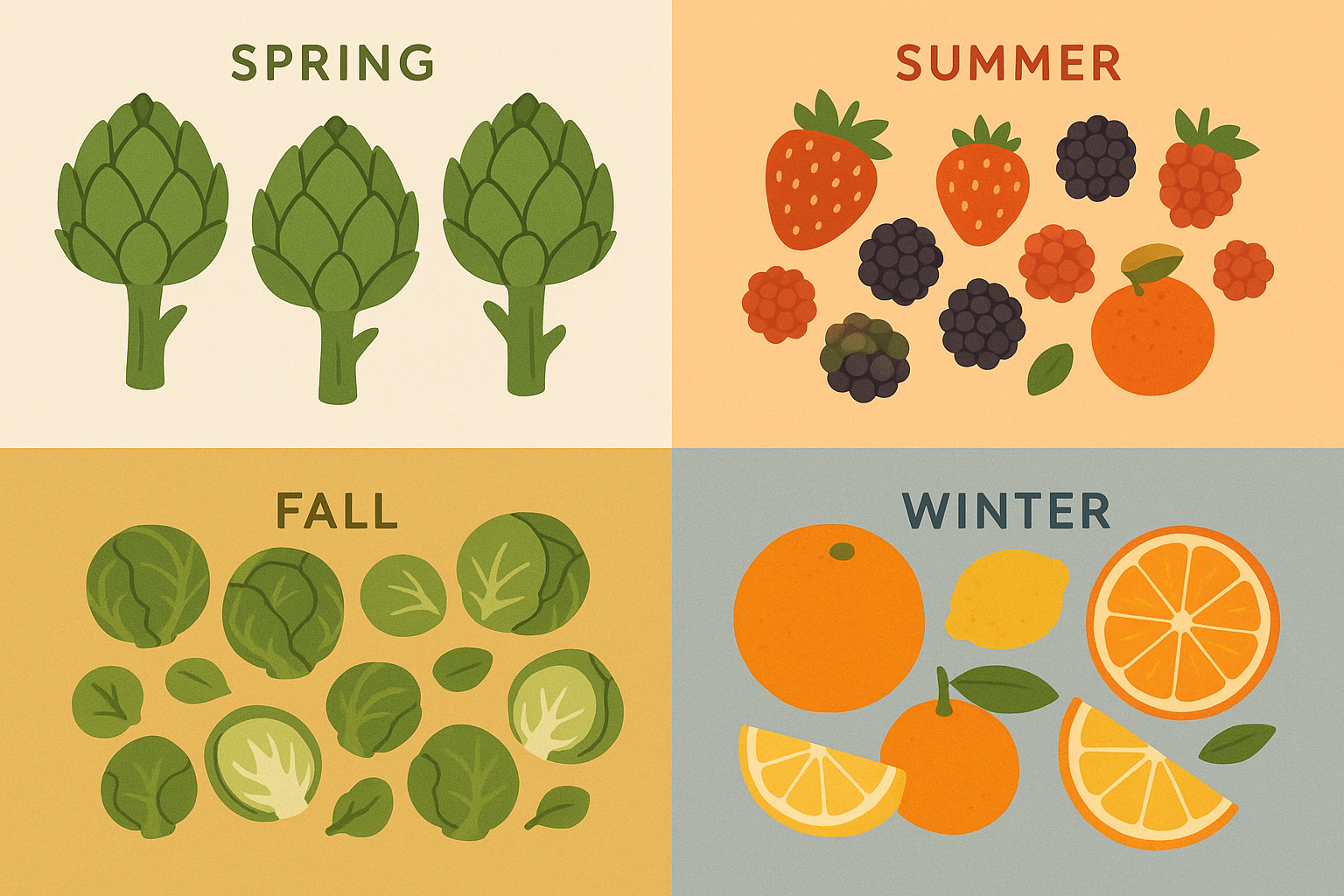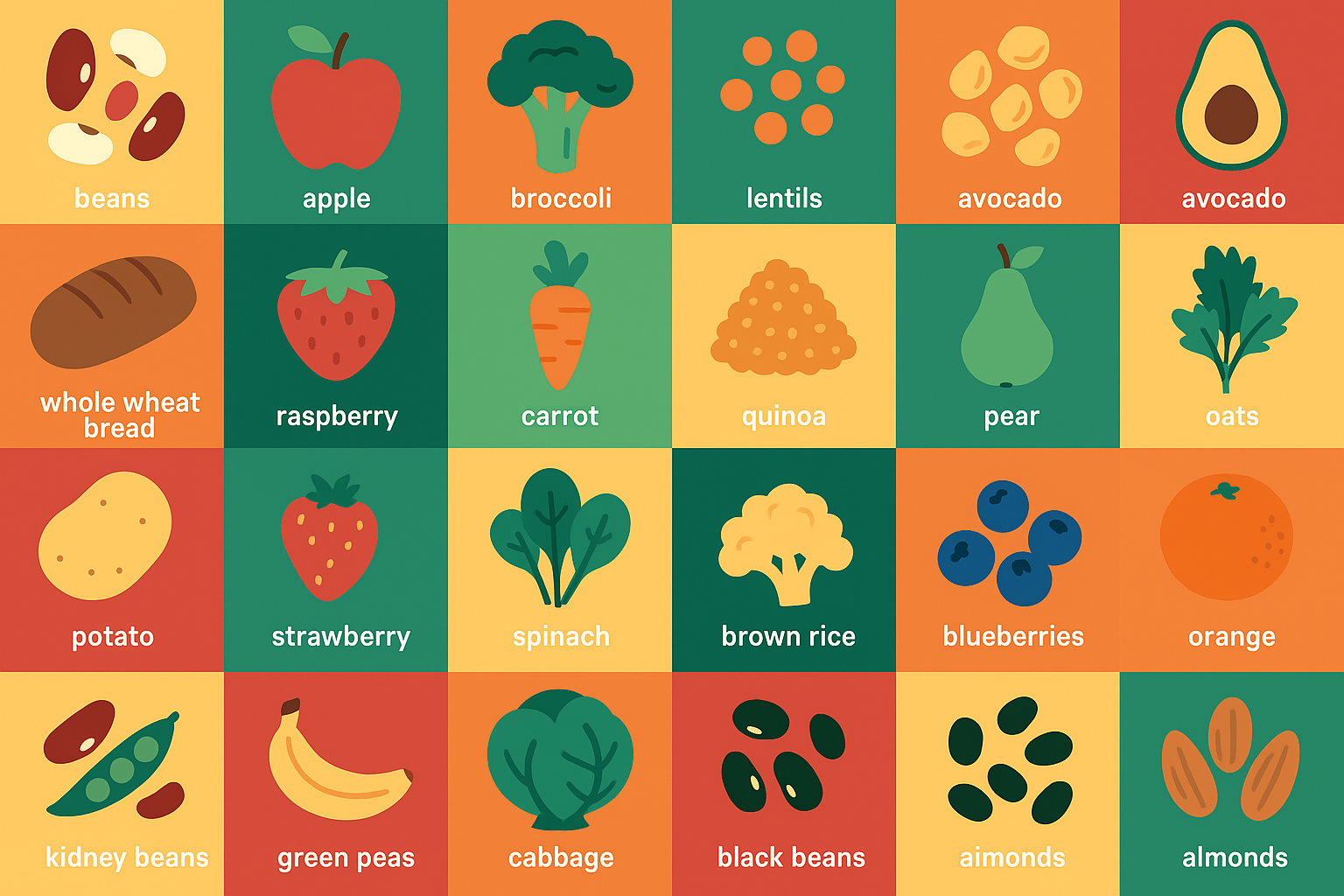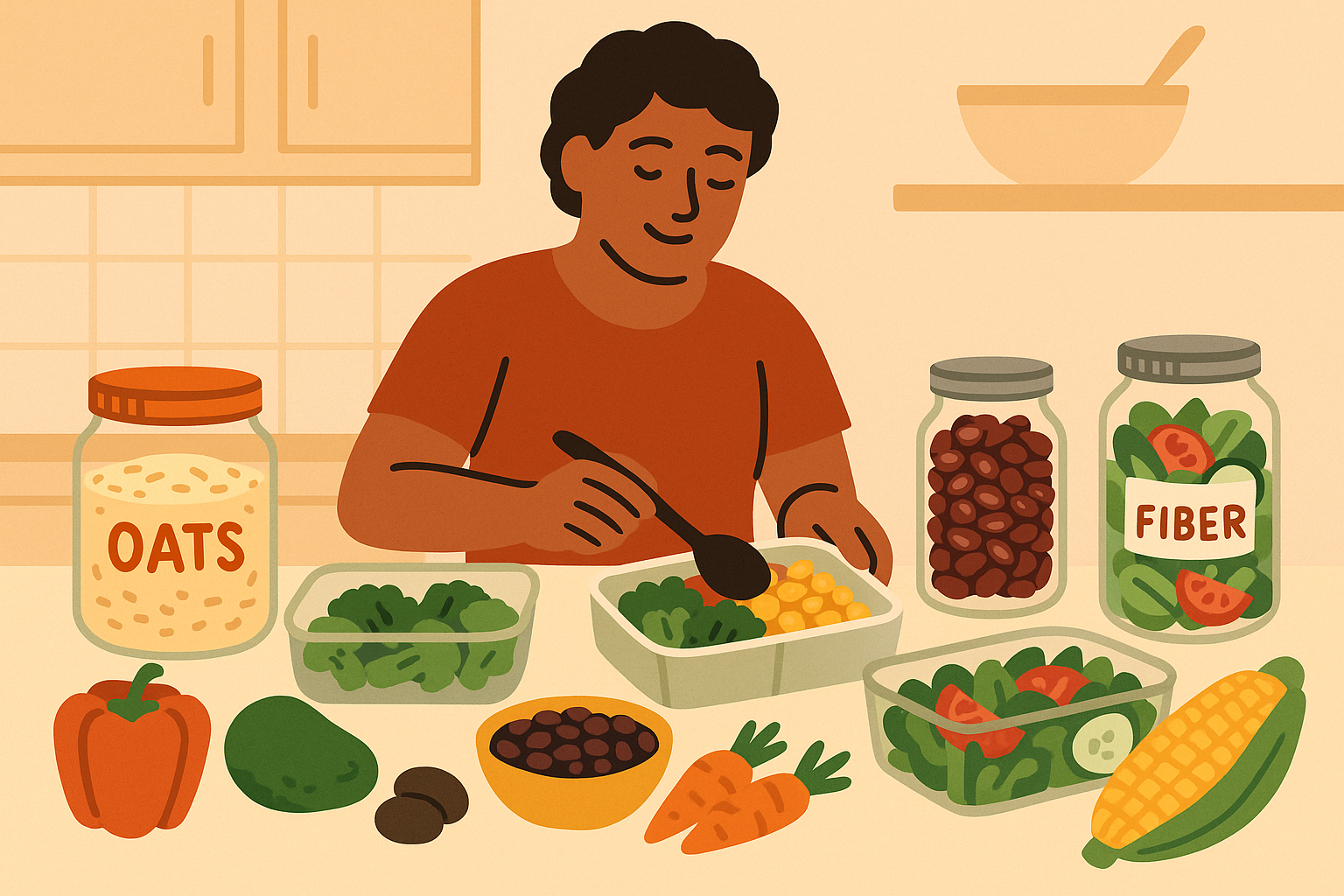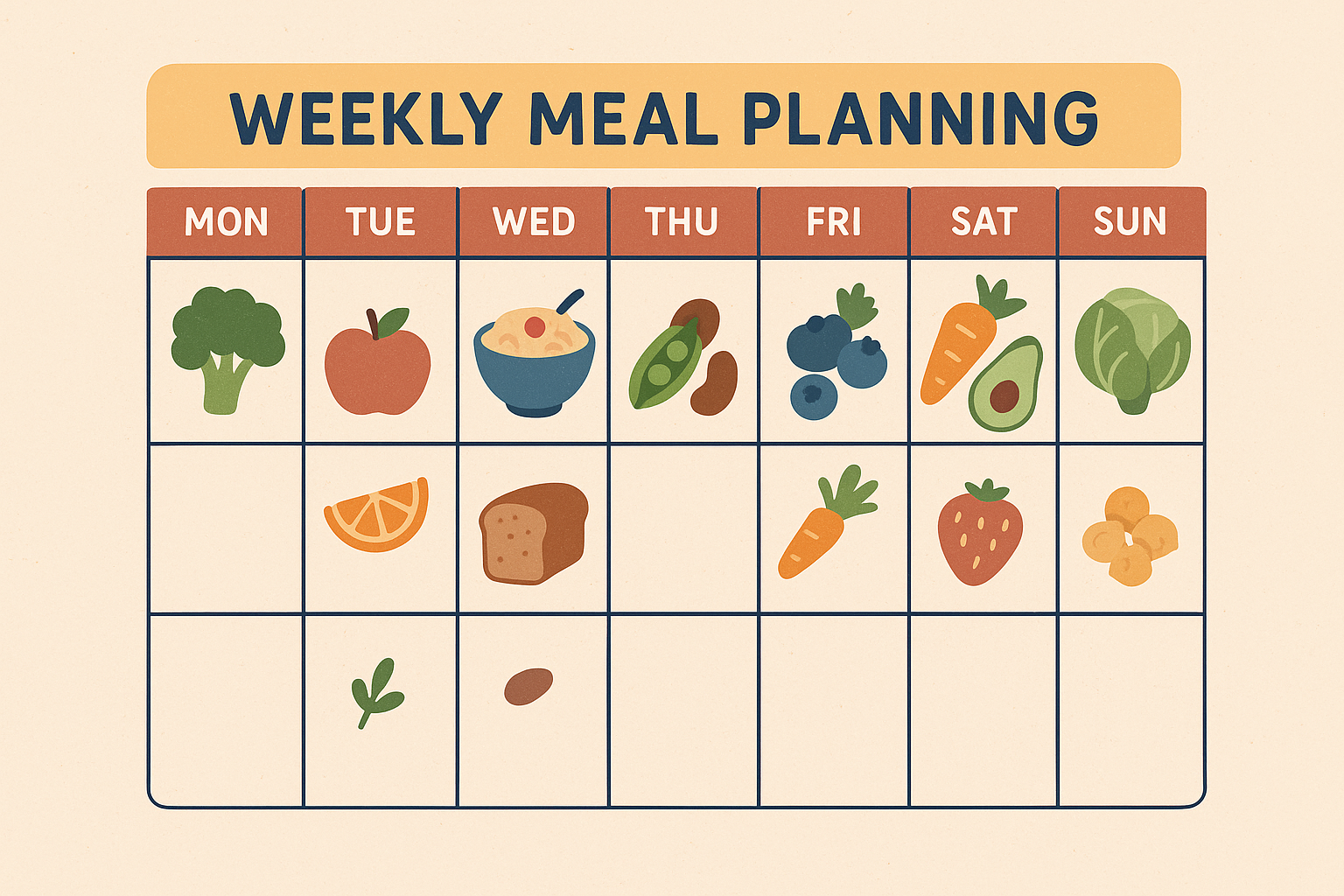25 High Soluble Fiber Foods That Will Transform Your Digestive Health (Complete Guide)
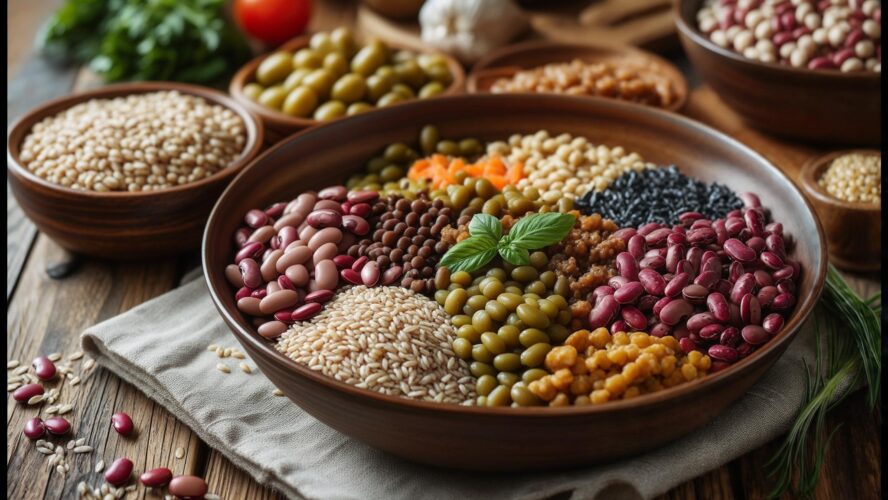
Let’s be honest—most of us aren’t getting nearly enough fiber. I sure wasn’t until I started paying attention to what I was actually eating every day. Currently, dietary fiber intakes among adults in the United States average about 15 grams a day—that’s about half the recommended amount of 25-30 grams daily, according to UCSF Health. I discovered this shocking statistic during my own wellness journey when I realized I was experiencing digestive issues that could be traced back to inadequate fiber intake. You might be facing similar challenges without even realizing the connection.
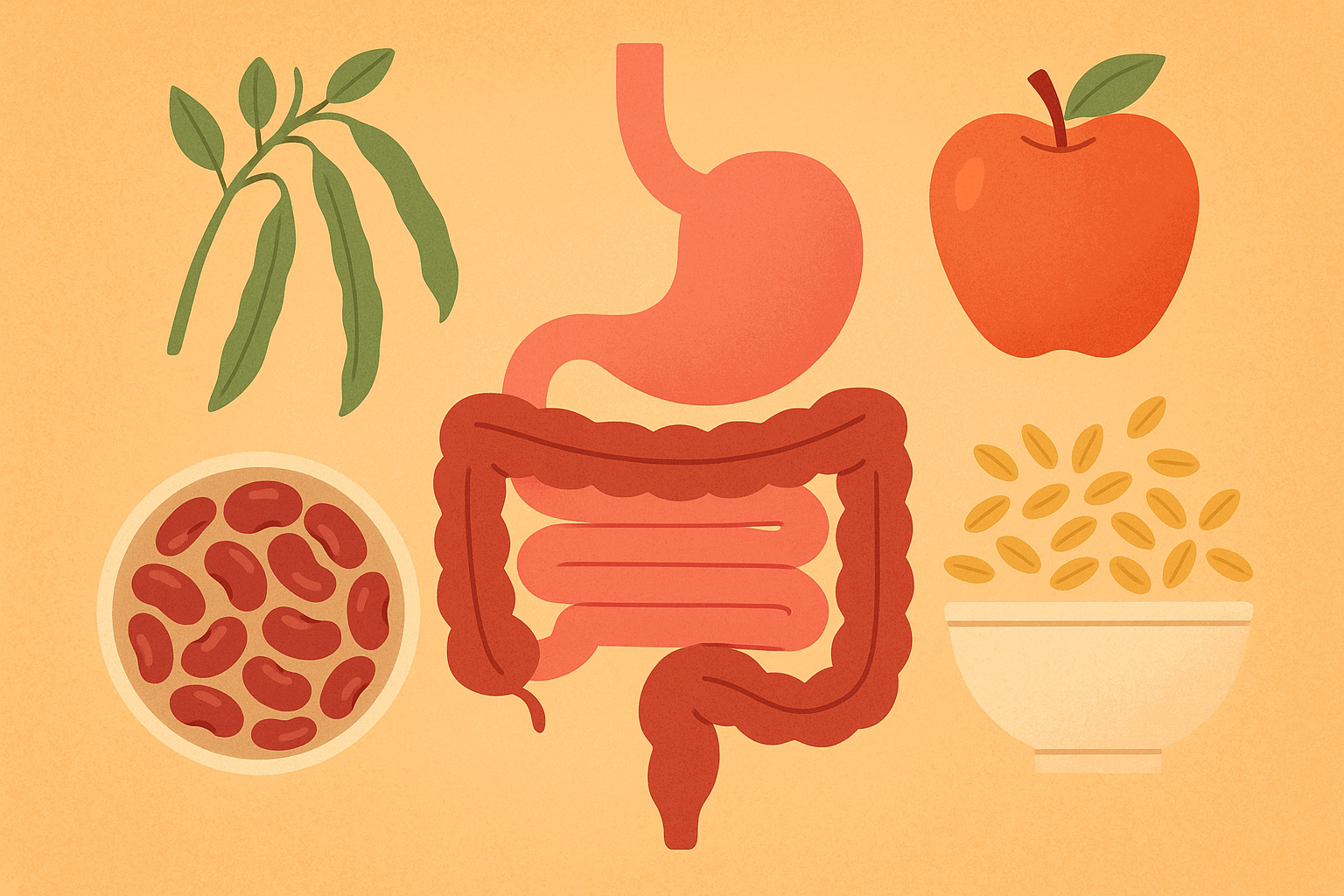
Here’s the cool thing about soluble fiber—it basically turns into a gel in your stomach. That gel helps keep your cholesterol in check, stops your blood sugar from spiking, and feeds the good bacteria in your gut. The foods I’ve compiled in this guide represent the most effective sources of soluble fiber that you can easily work into your daily routine without feeling like you need a nutrition degree.
Once you know which high-fiber foods pack the most fiber punch, grocery shopping becomes so much easier. No more wandering the aisles wondering what actually helps your gut. Each food on this list has been evaluated based on how well your body can use it, whether you can find it year-round, how processed it is, and how easily you can actually fit it into your real life.
For those looking to optimize their digestive wellness beyond fiber intake, exploring simple ways to beat bloat and improve digestion provides additional strategies that complement a high-fiber diet. These foods high in fiber represent your best bet for bridging that nutritional gap while supporting your overall health goals.
Table of Contents
- What You Need to Consider When Choosing High Soluble Fiber Foods
- Soluble vs. Insoluble Fiber Content
- Bioavailability and Digestibility
- Seasonal Availability and Freshness
- Processing Level and Purity
- Daily Intake Integration
- 25 Top High Soluble Fiber Foods Across Key Categories
- Legumes and Beans (8 foods)
- Fruits (8 foods)
- Vegetables (5 foods)
- Grains and Seeds (4 foods)
- Integrating High Soluble Fiber Foods into Your Conscious Living Journey
- Final Thoughts
TL;DR
- Most of us only get 15 grams of fiber daily—half of what we actually need
- Soluble fiber turns into a gel that lowers cholesterol and keeps blood sugar steady
- 25 foods across four categories give you the biggest fiber bang for your buck
- Beans and legumes are your fiber MVPs, with lima beans packing 2.7g per half cup
- Artichokes are the vegetable superstar with an incredible 4.7g per medium one
- Start slow to avoid digestive drama when upping your fiber game
- Fresh, seasonal, barely processed foods work best for your body
- Consistency beats perfection every single time
What You Need to Consider When Choosing High Soluble Fiber Foods
Before diving into specific food recommendations, let’s talk about what makes some fiber sources way better than others. I’ve learned through trial and error that choosing the right fiber-rich foods involves more than just looking at numbers on nutrition labels.
The difference between fiber types, how your body actually processes them, and when they’re at their nutritional peak all matter for your results. You’ll also want to think about how much these foods have been messed with and whether you can realistically eat them on a regular basis without it feeling like a chore.
Soluble vs. Insoluble Fiber Content
Not all fiber is created equal, and understanding this difference will help you pick foods that actually deliver the health benefits you’re after. Soluble fiber dissolves in water to create that gel I mentioned earlier, while insoluble fiber stays pretty much the same during digestion.
You’ll want to focus on foods where soluble fiber makes up a good chunk of the total fiber content. This gel formation is what gives soluble fiber its cholesterol-lowering superpowers and helps slow down how fast sugar hits your bloodstream. When you’re checking nutrition labels or doing food research, look for foods that specifically call out their soluble fiber content rather than just total fiber.
| Fiber Type | Water Solubility | Primary Benefits | Food Examples |
|---|---|---|---|
| Soluble | Dissolves in water, forms gel | Lowers cholesterol, regulates blood sugar, feeds gut bacteria | Oats, beans, apples, barley |
| Insoluble | Does not dissolve, adds bulk | Promotes regularity, prevents constipation, adds stool bulk | Whole grains, nuts, vegetables |
| Mixed | Contains both types | Combined benefits of both fiber types | Most whole foods contain both |
Bioavailability and Digestibility
Your body’s ability to actually use the fiber in food varies a lot depending on the source. Naturally occurring fiber in whole foods typically works way better than synthetic fiber that’s been added to processed products or taken as supplements.
Some high-fiber foods can make you bloated, gassy, or uncomfortable if you jump in too fast. Trust me on this one—don’t go from zero to fiber hero overnight. I learned this the hard way after a weekend of bean-heavy meals left me pretty uncomfortable. Start with smaller portions and gradually increase your fiber intake over several weeks. This gives your digestive system time to adjust and your gut bacteria time to adapt to all the new fiber.
Gradual Fiber Introduction Example: Week 1: Toss a small handful of black beans into your lunch salad or burrito bowl. Week 2: Keep up with the beans and add a medium apple as a snack. Week 3: Try steel-cut oats for breakfast (start with a quarter cup dry). Week 4: Keep building by adding one new fiber source every few days while paying attention to how your body feels.
A few simple tricks make these foods way easier on your stomach. Soak your beans overnight (seriously, it makes a huge difference), cook vegetables until they’re tender, and actually chew your fruits thoroughly. Don’t feel bad about buying pre-cooked canned versions when life gets crazy—they still give you the fiber benefits.
Seasonal Availability and Freshness
Fresh, seasonal foods consistently pack more nutrients and fiber than produce that’s traveled across the country or been sitting around for weeks. The fiber structure in fruits and vegetables starts breaking down over time, which means you get less of the good stuff.
Farmers markets are great if you have the time and budget, but don’t stress if you’re hitting up the regular grocery store. Shopping for what’s actually in season ensures you’re getting produce at its nutritional peak. Here’s something I’ve learned—eating what’s in season isn’t just trendy, it actually makes sense for your gut. Spring artichokes taste amazing (and have way more fiber), summer berries are at their sweetest, and those fall Brussels sprouts? They’re actually not bitter when they’re fresh.
When fresh options aren’t available, frozen vegetables often have just as much fiber as fresh ones, and they won’t guilt-trip you from the crisper drawer when you forget about them. Just avoid canned varieties with added sugars or tons of sodium, since these extras can mess with fiber absorption and your overall health.
Processing Level and Purity
Barely processed, whole foods keep their natural fiber structure intact, which is crucial for getting the health benefits you’re after. Heavy processing can damage fiber and often introduces additives that might interfere with absorption or cause digestive issues.
When you’re looking at packaged foods, check out the ingredient list. The fewer ingredients, the better. Skip products with artificial fiber, tons of preservatives, or added sugars that can cancel out the positive effects of soluble fiber.
How you cook matters too. Steaming, roasting, and light sautéing keep fiber structure better than boiling everything to death. Eating some things raw works great for many fruits and some vegetables, giving you maximum fiber benefit with zero processing.
Daily Intake Integration
The most nutritionally perfect food won’t help you if it just sits there rotting in your fridge. Think about how easily you can actually work these foods into your current eating habits and lifestyle without making it feel like a second job.
Aim for 25-35 grams of total fiber daily, with at least 10-15 grams coming from soluble fiber sources. This might sound overwhelming at first, but spreading it across meals and snacks makes it totally doable. A bowl of oatmeal at breakfast, an apple as a snack, and a side of Brussels sprouts at dinner can give you a solid chunk of your daily soluble fiber needs.
Understanding that fiber is so good for your health in ways that go way beyond just keeping you regular can help motivate you to stick with it.
Sunday meal prep doesn’t have to be Instagram-perfect. I throw a big pot of beans on the stove while I’m doing laundry, prep some overnight oats in mason jars (because I’m fancy like that), and wash and cut up apples so I actually eat them instead of letting them rot in the crisper drawer. Many high-fiber foods actually taste better after a day or two, so batch cooking is especially rewarding with these ingredients.
25 Top High Soluble Fiber Foods Across Key Categories
I’ve organized these 25 carefully selected foods into four main categories to help you understand where to find the best sources of soluble fiber. Each food has been evaluated based on fiber content, how well your body can use it, whether you can find it year-round, and how easily you can work it into your daily routine without major life changes.
These foods high in fiber range from stuff you probably already eat to some you might not have considered. The key is finding the ones that work with your taste preferences and lifestyle while getting the most soluble fiber bang for your buck.
Legumes and Beans (8 foods)
Beans and legumes are like the dependable friends of the fiber world—always there when you need them, and they taste great in just about everything. These fiber foods give you the most concentrated and reliable sources of soluble fiber you can find, plus they’re affordable and work in tons of different dishes. From black beans to edamame, these foods are available year-round and work across pretty much every type of cuisine you can think of.
I’ve found that getting these fiber foods into my weekly routine has made the biggest difference in hitting my daily fiber goals. They’re also super forgiving—you can batch cook them on weekends and use them all week in different ways without getting bored.
1. Black Beans
Black beans are like the dependable friend of the fiber world—always there when you need them, and they pack a solid 2.4g of soluble fiber per half cup cooked. Navy beans, kidney beans, and pinto beans give you similar benefits with slightly different flavors, so you can switch things up without losing the fiber benefits.
These beans work perfectly for meal prep bowls, hearty soups, and Mexican-inspired dishes. Their robust flavor pairs well with spices and aromatics, making them appealing even if you usually avoid legumes.
They’re super easy for your body to use when properly cooked and soaked, you can find them year-round with consistent quality, they need minimal processing beyond cooking, and they fit seamlessly into weekly meal prep routines.
2. Lentils (Red, Green, Brown)
Lentils give you 2.0g of soluble fiber per half cup cooked and they’re way easier on your digestive system than bigger beans. Red lentils cook the fastest (15-20 minutes), green lentils hold their shape well in salads, and brown lentils work great for soups and stews.
You don’t need to soak lentils, which makes them perfect for busy weeknights when you want a quick protein source that also delivers fiber. They soak up flavors like crazy and work in everything from Indian dal to Mediterranean salads.
They’re way easier to digest than larger legumes, so they rarely cause digestive drama. You can find them everywhere, they need zero processing for dried varieties, and they’re perfect when you’re short on time since they cook so quickly.
3. Chickpeas (Garbanzo Beans)
Chickpeas pack 1.9g of soluble fiber per half cup cooked and they’re incredibly versatile. Fresh chickpeas, low-sodium canned varieties, and dried options all give you solid fiber benefits.
From creamy hummus to crunchy roasted snacks, curry bases to salad toppers, chickpeas work in just about everything. Their mild, nutty flavor appeals to most people and works across different dietary preferences.
Your body can use them really well, they work in tons of different preparations, you can find them pretty much everywhere, and they fit perfectly into Mediterranean and Middle Eastern diets, making chickpeas a reliable choice for consistent fiber intake.
4. Lima Beans
Lima beans are the fiber champions of this category with 2.7g of soluble fiber per half cup cooked. Baby lima beans and large lima beans offer similar nutrition, while frozen varieties keep the fiber content and make life easier.
These beans are amazing in Southern-style dishes, succotash, and smooth butter bean purees. Their creamy texture when cooked makes them excellent for blending into soups or serving as a side dish.
They have excellent fiber content, you can get them fresh in summer, they need minimal processing, though you might want to introduce them gradually if you have a sensitive digestive system.
5. Split Peas
Split peas deliver 1.1g of soluble fiber per half cup cooked. Yellow and green varieties offer similar nutrition and break down completely when cooked, creating naturally thick, satisfying soups without any extra thickeners.
Classic split pea soup and Indian dal preparations showcase their ability to create hearty, filling meals. Their natural thickening properties mean you don’t need additional starches or weird thickeners.
They’re easy to digest when well-cooked, have a long shelf life, need minimal processing, and are super economical, making split peas an accessible option for consistent fiber intake.
6. White Beans (Cannellini)
White beans provide 2.5g of soluble fiber per half cup cooked. Great Northern beans, navy beans, and butter beans offer similar nutritional profiles with subtle flavor differences.
Italian dishes, white bean chili, and pureed dips all benefit from their creamy texture and mild flavor. They work particularly well if you find other beans too strong in taste.
They deliver excellent fiber, have a mild flavor that works for picky eaters, you can find good canned options, and their versatile texture makes white beans a reliable choice for families and varied palates.
7. Adzuki Beans
Adzuki beans provide 2.8g of soluble fiber per half cup cooked. These small red beans popular in Asian cuisine have a naturally sweet flavor and cook faster than larger bean varieties.
Asian desserts, rice dishes, and sprouting for salads showcase their versatility. Their sweet flavor makes them appealing if you typically avoid savory legumes.
They have high fiber concentration and a unique flavor profile, though you might need to hit up specialty stores in some areas. They’re super easy to digest, which makes them worth seeking out.
8. Edamame
Edamame contains 1.5g of soluble fiber per half cup shelled. Fresh pods, frozen shelled varieties, and organic options all provide convenient access to this fiber source.
Perfect as snack food, salad additions, or components in Asian-inspired dishes, edamame requires almost no prep while delivering both fiber and protein.
They have good fiber content, convenient frozen options are always available, they need minimal preparation, and kids actually like them, making edamame an easy addition to family meal planning.
Weekly Bean Rotation Example: Monday: Black bean and quinoa bowl with avocado. Wednesday: Red lentil curry with brown rice. Friday: White bean and kale soup. Sunday: Chickpea salad with Mediterranean vegetables. This rotation gives you 8-10g of soluble fiber weekly from legumes alone while keeping things interesting.
Fruits (8 foods)
Fruits give you soluble fiber along with vitamins, antioxidants, and natural sweetness that makes getting your fiber actually enjoyable. These fiber-rich options range from everyday apples and pears to more interesting choices. They offer different seasonal availability, prep methods, and ways to work them into your routine while being easy for your body to use and requiring almost no processing.
What I love about fruit sources is that they satisfy sweet cravings while helping you hit your fiber goals. You’re getting multiple benefits in one delicious package, which makes sticking with it so much easier.
9. Apples (with skin)
Apples deliver 1.2g of soluble fiber per medium apple when you eat them with the skin on. Honeycrisp, Gala, Granny Smith, and Fuji varieties all give you similar fiber benefits while tasting completely different.
These work as grab-and-go snacks, baking ingredients, fresh salad components, or homemade applesauce. Their natural sweetness and satisfying crunch make them appealing to pretty much everyone.
You can find them year-round, your body can use them really well, they need zero processing, and they’re super easy to work into your daily routine, making apples one of the most accessible fiber sources out there.
10. Pears (with skin)
Pears are the fruit fiber champions with 2.1g of soluble fiber per medium pear. Bartlett pears are softer, Bosc pears hold their shape when cooked, and Asian pears give you that satisfying crisp texture.
Fresh eating, poached desserts, and salad ingredients all benefit from pears’ natural sweetness and fiber content. Their delicate flavor works in both sweet and savory dishes.
They have the best fiber content among fruits, peak availability in fall, need no processing, and are super easy to digest, making pears a valuable addition to your fiber goals.
11. Citrus Fruits (Oranges, Grapefruits)
Citrus fruits provide 1.8g of soluble fiber per medium orange and 2.3g per half grapefruit. Navel oranges, blood oranges, ruby red grapefruit, and white grapefruit all offer substantial fiber alongside vitamin C benefits.
Breakfast fruits, fresh juice alternatives, and salad components showcase their versatility. Their bright acidity adds flavor complexity to both sweet and savory dishes.
You get a good vitamin C bonus, winter seasonal availability that coincides perfectly with cold season, though some people might need to introduce them gradually due to natural acidity levels.
12. Berries (Strawberries, Blueberries, Raspberries)
Berries provide 0.9g of soluble fiber per cup of strawberries, 0.7g per cup of blueberries, and 0.6g per cup of raspberries. Fresh berries during summer and frozen varieties keep their fiber content year-round.
Smoothies, yogurt toppings, breakfast cereals, and direct snacking all benefit from berries’ natural sweetness and vibrant colors. Wild varieties often pack even more fiber when you can find them.
You get excellent antioxidants beyond fiber, good frozen availability, they need minimal processing, and people actually want to eat them, which increases the chances you’ll stick with it.
13. Bananas
Bananas contain 0.6g of soluble fiber per medium banana, with slightly green bananas providing higher fiber content. Cavendish bananas, plantains, and red bananas all offer fiber benefits with different flavor profiles.
Smoothies, baking applications, portable snacks, and post-workout fuel all benefit from bananas’ natural sweetness and creamy texture. Their potassium content provides additional nutritional value.
You can find them year-round, they’re super easy to digest, naturally sweet, and come in their own convenient packaging, making bananas one of the most accessible fiber sources.
14. Figs (Fresh or Dried)
Figs deliver 1.9g of soluble fiber per 2 medium fresh figs and 1.4g per ¼ cup dried. Fresh figs are available late summer/early fall, while dried figs give you year-round access. Mission and Brown Turkey varieties are most common.
Mediterranean dishes, cheese plates, and baking ingredients all showcase figs’ natural sweetness and unique texture. Their honey-like flavor works in both sweet and savory applications.
They have high fiber concentration and limited fresh season, some processing for dried varieties, and you might need to hit specialty stores, but their exceptional nutritional density makes them worth it.
15. Prunes (Dried Plums)
Prunes provide 1.5g of soluble fiber per 5 prunes. Pitted prunes, organic varieties, and prune juice (though whole fruit is better) all offer fiber benefits with proven digestive support.
Digestive health support, baking ingredients, and trail mix components utilize prunes’ concentrated sweetness and fiber content. Their chewy texture adds interest to various preparations.
They’re a concentrated fiber source with long shelf life, minimal processing through dehydration, and specific digestive benefits make prunes valuable for targeted digestive support.
16. Avocados
Avocados contain 2.1g of soluble fiber per half medium avocado. Hass avocados are most common, while Fuerte variety offers seasonal alternatives. Getting the ripeness right is crucial for both digestibility and taste.
Toast toppings, guacamole, salad ingredients, and smoothie additions all benefit from avocados’ creamy texture and mild flavor. Their healthy fats help your body absorb fat-soluble vitamins.
You get excellent healthy fats as a bonus, year-round availability from different growing regions, minimal processing requirements, and they keep you full longer, supporting sustained energy levels.
| Fruit Category | Top Fiber Source | Soluble Fiber Content | Peak Season | Best Uses |
|---|---|---|---|---|
| Tree Fruits | Pears (with skin) | 2.1g per medium fruit | Fall | Fresh eating, desserts |
| Citrus | Grapefruit | 2.3g per half fruit | Winter | Breakfast, salads |
| Tropical | Avocado | 2.1g per half fruit | Year-round | Toast, salads, smoothies |
| Stone Fruits | Fresh Figs | 1.9g per 2 medium | Late summer | Mediterranean dishes |
| Berries | Strawberries | 0.9g per cup | Summer | Smoothies, yogurt |
Vegetables (5 foods)
Vegetables in this category give you substantial soluble fiber while packing in essential vitamins, minerals, and other good stuff your body needs. These five selections range from exceptional fiber sources to versatile options that work in tons of different dishes. Each vegetable offers unique prep methods, seasonal considerations, and ways to work them into your routine while delivering incredible nutrient density beyond just fiber content.
I’ve discovered that vegetables often give you the most bang for your buck when it comes to high-fiber foods. You’re getting incredible nutrient density along with your fiber intake, which makes them incredibly valuable additions to any meal.
17. Brussels Sprouts
Brussels sprouts deliver 2.0g of soluble fiber per cup cooked. Fresh sprouts, frozen varieties, and baby Brussels sprouts all provide substantial fiber with slight texture differences.
Roasted side dishes, shredded raw in salads, and sautéed preparations all help overcome their sometimes challenging reputation. Proper cooking techniques get rid of the bitterness while keeping the fiber intact.
They have high fiber concentration, fall/winter peak season availability, need minimal processing, though you might need to pair them strategically with flavors people actually like for broader acceptance.
18. Artichokes
Artichokes are the fiber superstar of the vegetable world—one medium cooked artichoke gives you an exceptional 4.7g of soluble fiber. Globe artichokes are most common, with baby artichokes available seasonally and hearts available canned or jarred.
Steamed whole artichokes create an interactive eating experience (basically nature’s interactive snack, plus melted butter for dipping doesn’t hurt), while hearts work perfectly in salads, pizzas, and Mediterranean dishes. Their unique flavor and texture add sophistication to meals.
They have exceptional fiber content that beats all other vegetables, seasonal spring availability for fresh ones, minimal processing for whole artichokes, though knowing how to prep them definitely helps the experience.
19. Sweet Potatoes
Sweet potatoes contain 1.8g of soluble fiber per medium baked sweet potato with skin. Orange-fleshed varieties, purple sweet potatoes, and Japanese sweet potatoes all provide fiber benefits with different flavor profiles.
Baked sides, roasted cubes, mashed preparations, and breakfast hash applications all showcase sweet potatoes’ natural sweetness and creamy texture. Their versatility spans from simple preparations to complex dishes.
Good fiber content plus substantial beta-carotene, excellent storage life extending seasonal availability, minimal processing requirements, and universal appeal across age groups.
20. Carrots
Carrots provide 1.1g of soluble fiber per cup cooked. Baby carrots, whole carrots, rainbow varieties, and organic options all offer similar fiber benefits with convenient preparation options.
Raw snacking, cooked sides, soup ingredients, and juice bases all utilize carrots’ natural sweetness and satisfying crunch. Light cooking actually improves fiber bioavailability compared to eating them raw.
Moderate fiber content that gets better with cooking, year-round availability, minimal processing for baby varieties, and exceptional versatility in preparation methods.
21. Broccoli
Broccoli contains 1.5g of soluble fiber per cup cooked. Fresh crowns, frozen florets, broccolini, and organic varieties all provide substantial fiber alongside vitamin C and other nutrients.
Steamed sides, stir-fry ingredients, and raw salad components all benefit from broccoli’s mild flavor and satisfying texture. Most people know how to cook it, which makes it accessible for most home cooks.
Good fiber content with substantial vitamin benefits, year-round availability, minimal processing for frozen varieties, and broad acceptance across different palates.
Grains and Seeds (4 foods)
Grains and seeds in this category provide concentrated soluble fiber sources that work easily into daily routines. These four selections offer different processing levels, prep requirements, and serving sizes while maintaining excellent shelf stability and nutritional density. From traditional oats to modern superfoods, each option provides unique benefits for fiber intake goals.
These fiber food options have become staples in my pantry because they’re so versatile and shelf-stable. You can always have them on hand, which removes the excuse of not having fiber foods available when you need them.
22. Oats (Steel-cut, Rolled)
Oats deliver 1.9g of soluble fiber per ¼ cup dry steel-cut oats and 1.4g per ½ cup dry rolled oats. Steel-cut oats are barely processed, rolled oats are more convenient, while instant oats are the most processed but still beneficial.
Breakfast porridge, overnight oats, baking ingredients, and savory applications all showcase oats’ versatility. Their natural creaminess when cooked creates satisfying textures without needing extra stuff.
For those wanting to perfect their oat game, learning how to cook delicious oatmeal every time ensures you get maximum fiber benefits while actually enjoying what you’re eating.
Excellent cholesterol-lowering benefits that are actually proven by research, year-round availability, minimal processing for steel-cut varieties, and easy integration into daily breakfast routines.
23. Barley (Pearl, Hulled)
Barley provides 2.4g of soluble fiber per ½ cup cooked pearl barley. Hulled barley is less processed but takes longer to cook, while pearl barley is more convenient and both give you substantial fiber.
Soups, grain salads, risotto-style dishes, and breakfast porridge all benefit from barley’s chewy texture and mild flavor. It soaks up flavors really well, making it versatile across different cuisines.
High fiber concentration among grains, excellent shelf stability, moderate processing for pearl variety, though it does require some cooking time that works well for meal prep.
24. Chia Seeds
Chia seeds contain 2.1g of soluble fiber per tablespoon. Black chia seeds, white chia seeds, and organic varieties all provide similar nutritional profiles with excellent fiber concentration.
Puddings, smoothie additions, egg replacements in baking, and yogurt toppings all utilize chia seeds’ ability to absorb liquid and create gel-like textures. Their mild flavor doesn’t mess with other ingredients.
Concentrated fiber source requiring small servings, excellent shelf stability, minimal processing requirements, and easy integration without major meal planning adjustments.
25. Flaxseeds (Ground)
Flaxseeds provide 1.1g of soluble fiber per tablespoon when ground. They have to be ground for your body to actually use them since whole seeds basically pass right through your digestive system. Golden and brown varieties offer similar nutritional benefits.
Smoothie additions, baking ingredients, cereal toppings, and egg replacements all benefit from ground flaxseeds’ nutty flavor and nutritional density. Fresh grinding keeps the omega-3 content alongside fiber benefits.
Good fiber content plus omega-3 fatty acid benefits, year-round availability, requires grinding for your body to actually use them, though small serving sizes make integration convenient.
| Food Category | Highest Fiber Source | Soluble Fiber Content | Preparation Time | Storage Life |
|---|---|---|---|---|
| Legumes & Beans | Adzuki Beans | 2.8g per ½ cup cooked | 45-60 minutes | 2-3 years dry |
| Fruits | Grapefruit | 2.3g per half fruit | None (fresh) | 2-3 weeks fresh |
| Vegetables | Artichokes | 4.7g per medium cooked | 25-45 minutes | 1 week fresh |
| Grains & Seeds | Barley (Pearl) | 2.4g per ½ cup cooked | 45-60 minutes | 2 years dry |
Daily 15g Soluble Fiber Menu Example: Breakfast: Steel-cut oats (1.9g) with sliced banana (0.6g). Snack: Medium apple with skin (1.2g). Lunch: Chickpea salad (1.9g) with mixed greens. Snack: 1 tablespoon chia seeds in yogurt (2.1g). Dinner: ½ cup black beans (2.4g) with roasted sweet potato (1.8g). Total: 12.0g soluble fiber plus additional fiber from other ingredients gets you to that 15g target.
Integrating High Soluble Fiber Foods into Your Conscious Living Journey
Working these 25 fiber-rich foods into your wellness routine requires a thoughtful, gradual approach that actually works with your real life. Just like conscious living focuses on mindful choices over quick fixes, your fiber journey should prioritize sustainable changes over dramatic dietary overhauls that you’ll abandon in two weeks.
Start by picking 3-4 foods from this list that actually sound good to you and match your current cooking skills. Maybe you’ll begin with familiar options before exploring more adventurous choices like artichokes. This gradual approach prevents digestive overwhelm while building confidence in prep techniques.
Here’s something I’ve learned—eating what’s in season isn’t just trendy, it actually makes sense for your gut and your wallet. Spring artichokes, summer berries, fall Brussels sprouts, and winter citrus fruits provide variety while ensuring peak nutritional density. Shopping at farmers markets connects you to these natural rhythms while supporting local agriculture.
Here’s the deal with water—fiber without enough water is like trying to make oatmeal without liquid. It just doesn’t work right. Keep a water bottle handy and sip throughout the day. Your body needs adequate water to help soluble fiber form those beneficial gel-like substances in your digestive system.
Fair warning—your digestive system might throw a little tantrum at first. Some people cruise through the transition, others (like me) spend a few days wondering if they’ve made a terrible mistake. Bloating, gas, or digestive discomfort usually means you’re moving too fast—just dial back the portions temporarily and increase more gradually. Stick with it, drink lots of water, and things usually settle down within a week or two.
Sunday meal prep doesn’t have to be Instagram-perfect. I throw a big pot of beans on the stove while I’m doing laundry, prep some overnight oats in mason jars (because I’m fancy like that), and wash and cut up apples so I actually eat them instead of letting them rot in the crisper drawer. These foods often taste better after a day or two, making batch cooking particularly rewarding.
Look, I get it—reading about fiber isn’t exactly thrilling. But when you start feeling more energetic, less bloated, and just generally better in your own skin, you’ll understand why this stuff matters. The goal isn’t perfection but rather consistent, sustainable choices that support your long-term wellness journey. By choosing whole, fiber-rich foods over processed alternatives, you’re supporting both your digestive health and voting for a food system that prioritizes quality and environmental stewardship.
Understanding that dietary fiber is the real macronutrient you need to watch for overall health optimization can help you take a more holistic approach to wellness.
Your path to better digestive health through soluble fiber ultimately creates lasting habits that serve both your body and broader wellness goals. This approach aligns with conscious living principles that value transparency, sustainability, and mindful consumption over quick fixes or processed solutions.
For those seeking additional support in their wellness journey, Organic Authority offers curated content on clean eating, sustainable food choices, and evidence-based nutrition guidance. Their platform connects conscious consumers with trusted information about whole foods, seasonal eating, and environmental stewardship—all crucial elements in building a sustainable, fiber-rich lifestyle that supports both personal and planetary health.
Final Thoughts
Look, at the end of the day, this isn’t about becoming some perfect health guru. Your journey toward better digestive health through these 25 high soluble fiber foods is about feeling better in your own body and maybe helping the planet a little bit while you’re at it. Each choice to pick whole, minimally processed foods with fiber over refined alternatives creates positive effects that go way beyond just personal health benefits.
Remember that consistency beats perfection in this journey. Whether you’re starting with familiar options like apples and oats or exploring new territories with artichokes and adzuki beans, the key is gradual integration that respects your body’s adaptation process. Your digestive system will thank you for the patience, and your long-term health will reflect the sustainable habits you build today.
The 25 foods in this guide give you a comprehensive foundation for meeting your soluble fiber needs while supporting broader wellness goals. From the exceptional 4.7g found in a single artichoke to the convenient 2.1g per tablespoon of chia seeds, you now have the knowledge to make informed choices that align with your lifestyle, preferences, and health objectives.
For those interested in exploring gut health from multiple angles, understanding drinking vinegars as the next big thing for gut health can complement your fiber-rich diet with additional digestive support strategies.
Start small, be patient with yourself, and celebrate the wins—even if it’s just remembering to eat an apple with lunch. Stay hydrated, listen to your body’s signals, and don’t stress about being perfect. Your path to better digestive health through conscious fiber choices is ultimately an investment in long-term wellness that will pay dividends for years to come. You don’t need to eat all 25 of these foods to see results. Pick a few that sound good, start slow, and see how you feel. Your gut health journey doesn’t have to be perfect—it just has to be yours.

